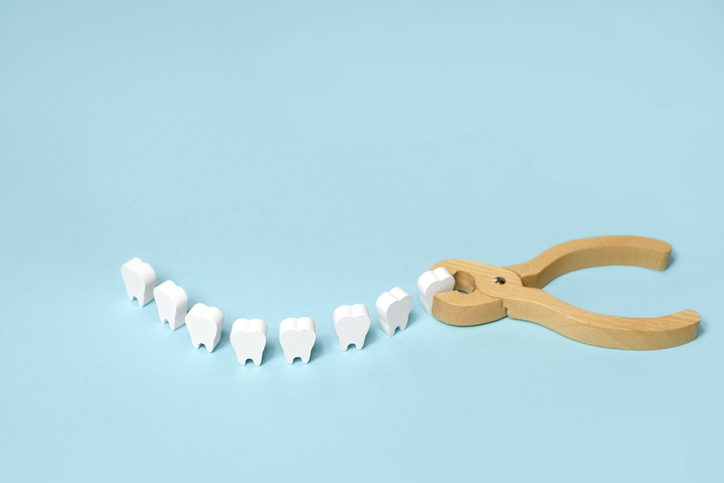Wisdom tooth extraction is a standard dental procedure. According to the statistics, more than 7 million wisdom teeth are removed each year. But what happens during the wisdom teeth removal procedure? Please read our article to learn more about the surgery and the recovery tips.
What Happens During the Wisdom Teeth Removal Procedure?
Wisdom teeth removal is usually a safe procedure that causes little to no discomfort to patients. Most commonly, it is performed using a local anesthetic. In some cases, your dentist might recommend general anesthesia if the case is complicated. Sedation dentistry can also be employed in cases when a patient suffers from acute dental anxiety. Typically, the wisdom teeth removal procedure consists of several steps:
- Your dentist examines the teeth and, if necessary, takes scans or X-rays to gather information on their position and condition.
- An anesthetic and sedation, if opted for, is administered to the patient. It takes a couple of minutes for the anesthetic to start taking effect.
- Once the extraction site is fully numb, your doctor begins wisdom teeth removal. If the tooth is fully erupted, it will be first separated from the gum tissue and then extracted. If the gum tissue fully or partially covers the tooth, your doctor will make incisions in the gum to reveal the tooth and then extract it. In some cases, the tooth is divided into pieces if it is easier to extract it this way.
- After removing the tooth, your doctor will clean the socket from any debris and disinfect it. Sometimes, medication is placed in the extraction site to prevent infection and promote healing.
- If necessary, your doctor might stitch the wound, but in many cases, it is not required.
- The last step of the procedure is to place clean gauze over the extraction site to reduce the bleeding and protect the blood clot forming in the socket.
After the procedure, your doctor will give you recommendations for a swift recovery and answer your questions.
Wisdom Teeth Removal Recovery Process
The extraction site will most likely still be numb for the first hour after the procedure. Then, the anesthetic will gradually wear out, and you are likely to start feeling some pain or throbbing, which can last several days. Some swelling in the face or the jaw might also occur. These symptoms are expected.
You might also experience minor bleeding, which should stop in a couple of hours once the blood clot is fully formed in the socket. The blood clot must form and be preserved in the socket for proper and fast healing. If the blood clot is disturbed or removed, it causes a condition called dry socket, which is painful and prolongs the recovery time.
Teeth Extraction Recovery Tips
Below, we list some tips on swift recovery after wisdom teeth extraction:
- Get good sleep before and after the procedure, as the body heals best while we sleep.
- Avoid nicotine and alcohol one day before the tooth extraction and for the whole recovery time because both these substances slow down healing.
- Do not eat for a couple of hours after the procedure while the anesthetic is still working. Then, adhere to a liquid diet for the first 24 hours. Liquid diet includes smoothies, yogurts, broths, etc.
- Never use a straw for drinking because the suction in the mouth might displace the blood clot in the socket.
- After the first 24 hours, please move to a soft diet and follow it for several days. Examples of a soft diet include mashed potatoes, pureed soups, soft cutlets, soft pasta, and bread without seeds.
- Avoid hard or crunchy foods. These require a lot of biting and chewing force and put unnecessary strain on the jawbone and gums. Also, particles of foods such as crackers, nuts, etc., might get stuck in the socket and cause inflammation.
- Manage pain with over-the-counter painkillers, such as Ibuprofen or others that your dentist prescribes. Be careful to stay within the recommended daily dose.
- Manage swelling by applying ice packs to the face for 15 to 20 minutes at a time, several times a day. Also, use an additional pillow at night to alleviate your head.
- Maintain thorough oral hygiene by carefully brushing and flossing your teeth and using salt water rinses several times a day, but do not gargle your mouth.
- If your dentist prescribes antibiotics, take the entire course.
Make an Appointment Today
Make an appointment for a tooth extraction in Upland today. We use up-to-date methods and modern equipment to provide stress-free and pain-free tooth extraction procedures. We look forward to your visit to Smile Studio.

